Traditional Neapolitan Migliaccio
Migliaccio is the typical dessert of Neapolitan Carnival, along with chiacchiere and sanguinaccio, a very tasty, moist, fragrant, creamy (it melts in your mouth) Neapolitan dessert with ancient origins, perhaps the oldest of the Neapolitan carnival tradition.
Its taste is reminiscent of Neapolitan pastiera due to the millefiori water aroma it releases when warm and its very light color, which is why it is called “the poor cousin of the pastiera.”
It is a very easy recipe to make, but to achieve the true Neapolitan migliaccio there are some secrets that I explain step by step in this recipe.
The perfect migliaccio is syrupy and shiny on the surface (see the photo of the slice below)
Important note: the sweet migliaccio should NOT be eaten immediately but only after at least 12 hours, to allow the flavors to blend, just like Neapolitan pastiera.
It is crucial for its success to avoid lumps in the dough, which should be as smooth as possible.
The migliaccio is traditionally prepared at Carnival and specifically for Mardi Gras, but also during Easter.
Do not miss my savory Neapolitan Migliaccio, a very appetizing savory pie that everyone always loves!
If you love sweet Migliaccio, I also recommend trying my Neapolitan Migliaccio with clementines (or coffee) or my “Chocolate Migliaccio“.
If you are looking for other recipes (sweet and savory) for Carnival, click on my “Carnival Special“.
You may also be interested in:
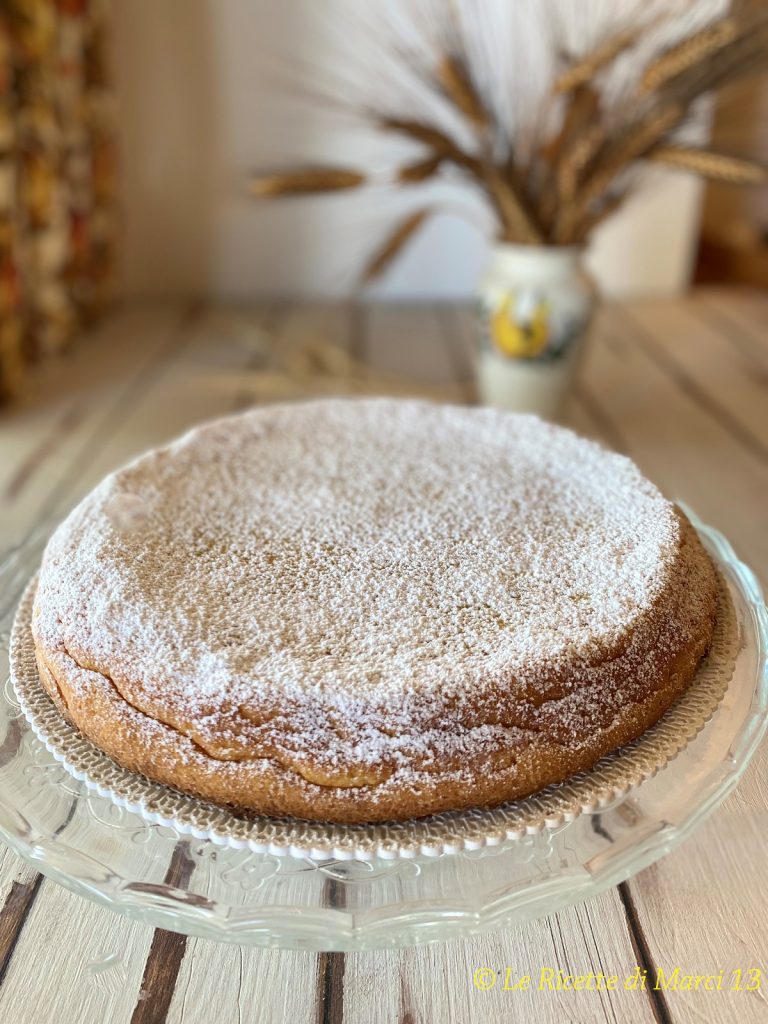
- Difficulty: Very easy
- Cost: Economical
- Rest time: 12 Hours
- Preparation time: 20 Minutes
- Portions: 5 people
- Cooking methods: Oven, Stove
- Cuisine: Italian
- Seasonality: Carnival, Spring
Ingredients for Traditional Neapolitan Migliaccio
- 4.4 oz remilled durum wheat semolina (I use Senatore Cappelli or Casillo)
- 1.6 cups whole milk
- 13.2 oz ricotta (basket or fuscella)
- 12.3 oz granulated sugar
- 3 eggs (whole)
- 1 tbsp butter (soft, I use Lurpak)
- 0.68 oz water (millefiori, I use double concentrate, about 20 ml)
- 1 tsp vanilla extract
- 1 tbsp limoncello
- 0.035 oz fine salt
- 0.035 oz lemon zest (grated)
- 0.035 oz orange zest (whole)
Tools
- Bowl
- Saucepan
- Grater
- Sieve
- Stand mixer Kenwood 1400 W power, illuminated bowl
- Immersion blender Braun 750 W power and with accessories
- Springform pan 20 cm
Steps for Traditional Neapolitan Migliaccio
It is important that all ingredients are at room temperature.
Prepare it 1 or 2 days before serving.

Take a saucepan and heat the milk, salt, butter, grated lemon and orange zest, bring to just below boiling point and – off the heat – incorporate the semolina, little by little, with a hand whisk, then put it back on low heat until it sizzles and detaches from the sides (it will take 3-4 minutes)
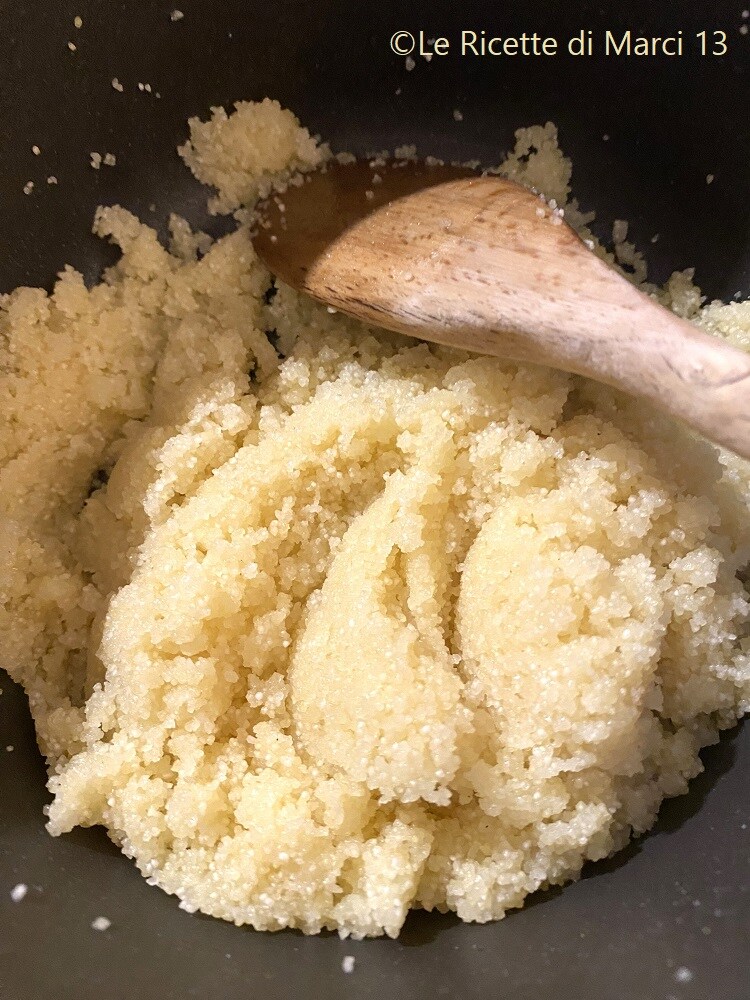
Remove the saucepan from the heat and immediately add the sugar, stirring until it completely dissolves (about 1 minute), then work the semolina mixture with the immersion blender (to obtain a smooth and lump-free dough) and finally let it cool completely (this step is important because otherwise, if you add the hot semolina mixture to the eggs, it will taste like eggs).
Also pass the ricotta through a sieve.
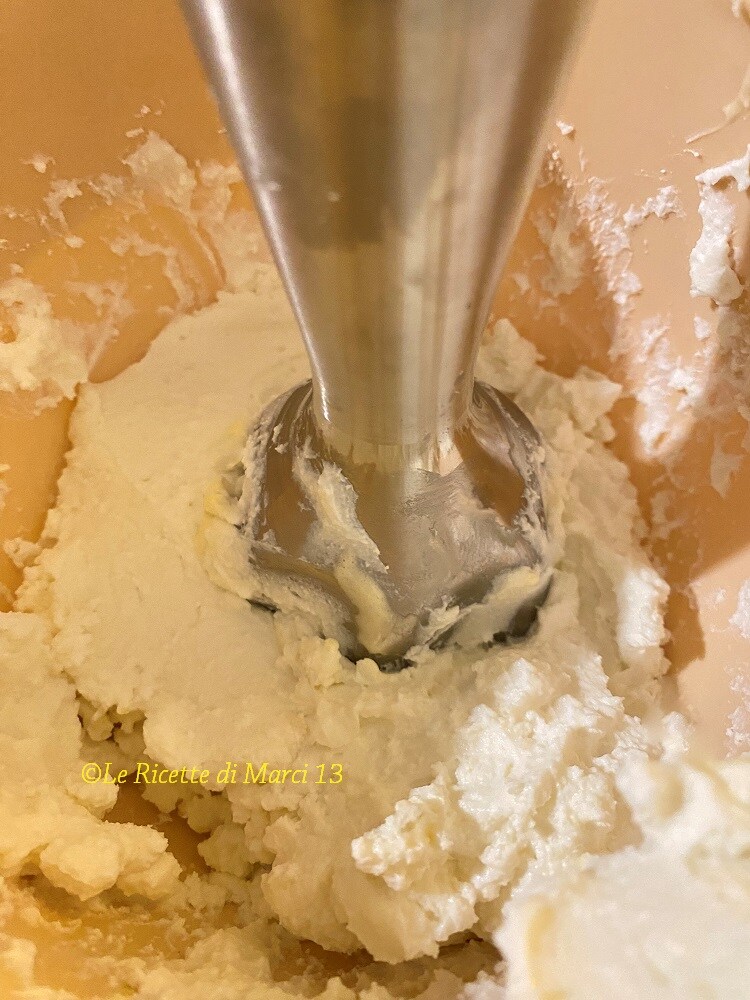
Then add to the sieved ricotta the cooled semolina mixture (previously worked with the immersion blender) then add the 3 eggs – one at a time – the vanilla extract and beat for about 5 minutes, then add the limoncello and only in the end, add the millefiori water.
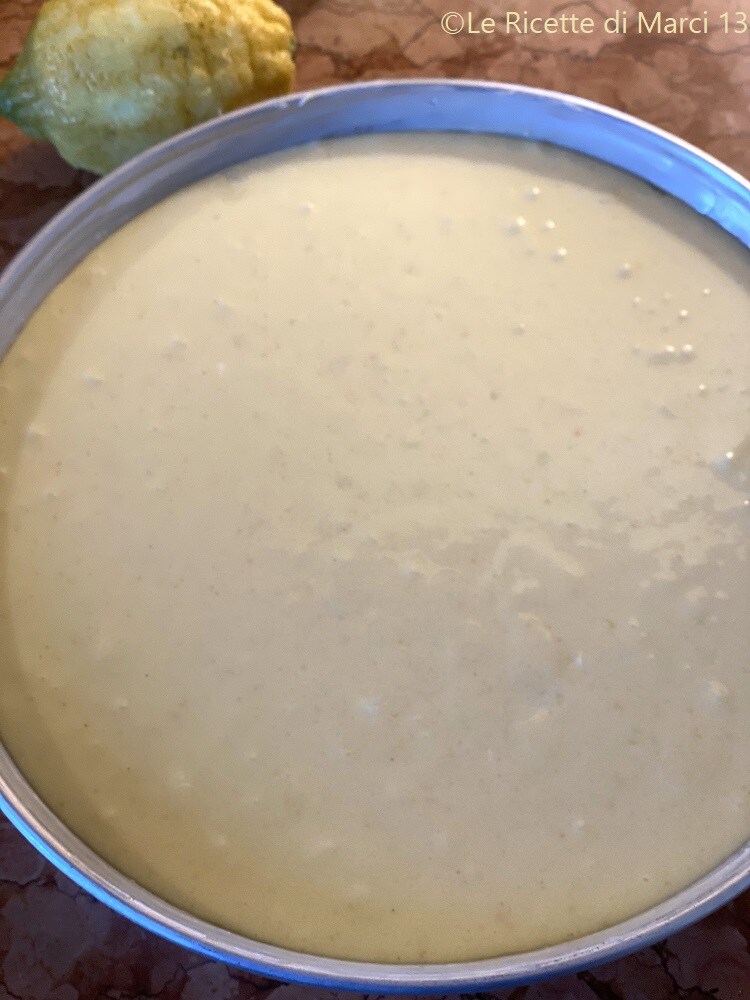
Butter and flour a 20 cm diameter springform pan.
Pour the batter into the pan and bake in a static oven at 338°F (170°C) for about 90 minutes, depending on your oven (it needs to bake slowly), in any case remember that the mixture is moist.
At the end of cooking, sprinkle the migliaccio with powdered sugar and let it cool in the oven off with the door open.
Serve it after at least 12-24 hours of rest.

Here is the migliaccio (cooled in the oven) after 12 hours of rest, as you can see from the photo: the perfect migliaccio is shiny and syrupy on the surface.
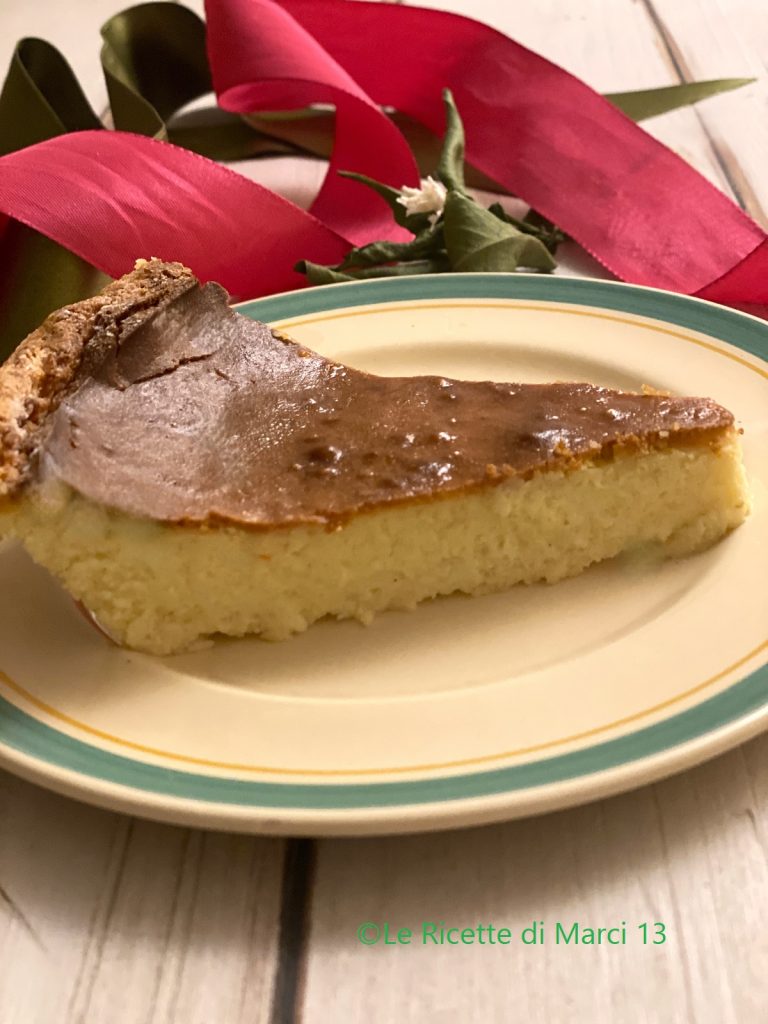
You can store the migliaccio well covered even 4 days at room temperature!
You can also freeze portions, for about 3 months…just enough time to reach Easter!
Notes and Tips
If you want to make the migliaccio more delicious, you can enjoy it together with sanguinaccio or try adding at the last moment some dark chocolate chips, frozen and floured. You can flavor the batter also by adding limoncello, some prefer to add cinnamon instead of citrus aromas.
Shopping Tips!!!
– To weigh the ingredients, I use this practical Digital Kitchen Scale, with a large removable bowl, tare function, and built-in timer, you can find it on Amazon at a great price.
– To beat the eggs perfectly, I use my Titanium Chef Patissier XL mixer with illuminated bowl and 1400 W power, integrated scale and blender, a faithful ally in the kitchen for: mixing, weighing, whipping, cooking, chopping, pasteurizing eggs.
If instead, you’re looking for a more economical and smaller stand mixer, you can safely choose to buy the excellent Kenwood Titanium Chef Baker XL, 1200W power, 5l bowl and integrated scale.
– To eliminate lumps in the dough and make it smooth, I used my handy immersion blender from Braun MultiQuick 7, which you can buy at a special price on Amazon.
Read my review for GialloZafferano on the Minipimer “Braun MQ9045 MultiQuick“. #adv
FAQ (Questions and Answers)
What are the origins of Neapolitan migliaccio?
Migliaccio is a typical dessert of the peasant tradition of Naples, prepared since the Middle Ages. Like almost all desserts of Neapolitan culinary tradition, migliaccio also has ancient origins.
The first recipe would date back to the medieval period (around the year 1000) and was probably invented by some peasant woman. To confirm this theory is one of the necessary ingredients for the preparation of the dessert: pig’s blood.
This was a typical food of the poor peasant tables because it was considered a complete and very nutritious food, and for this reason, capable of sustaining the fatigue of those who worked in the fields.
However, the recipe was soon modified at the behest of the Catholic Church and the wealthy bourgeoisie. According to them, the use of pig’s blood in cooking was linked to “pagan” traditions.
Despite many centuries of attempts by the same authorities to oppose the use of this ingredient, animal blood continued to be used in poor and peasant cuisine, embellished with chocolate (sanguinaccio), various spices, and vanilla.
It was only towards the end of the 18th century that the traditional recipe was modified: blood was replaced with water and milk, and semolina replaced millet flour, thus transforming into the dessert we all know.
It must be said that the disappearance of pig’s blood was not particularly rapid: for some centuries, in the poorest places of the Kingdom of Naples, blood was replaced by pork cracklings.
Today this custom has completely disappeared, also because the sale of pig’s blood has been banned since the 1990s for hygiene/sanitary reasons, and blood has been replaced by water/milk.
In ancient times, sweet migliaccio (there is also a savory version) was made with millet bread and pig’s blood. The name of the cake, in fact, derives from the Latin “miliaccium” meaning millet bread, a cereal linked to the poor Neapolitan cuisine.
Today the old ingredients have been replaced by semolina, milk, and butter.
The dough of migliaccio is very reminiscent of another Neapolitan dessert: the sfogliatella, as the ingredients used for making Neapolitan migliaccio are the same ones used for the filling of the Neapolitan sfogliatella (semolina, sugar, and ricotta), and for this reason, in some areas of the Campania region, migliaccio is also known as “sfogliata”.

